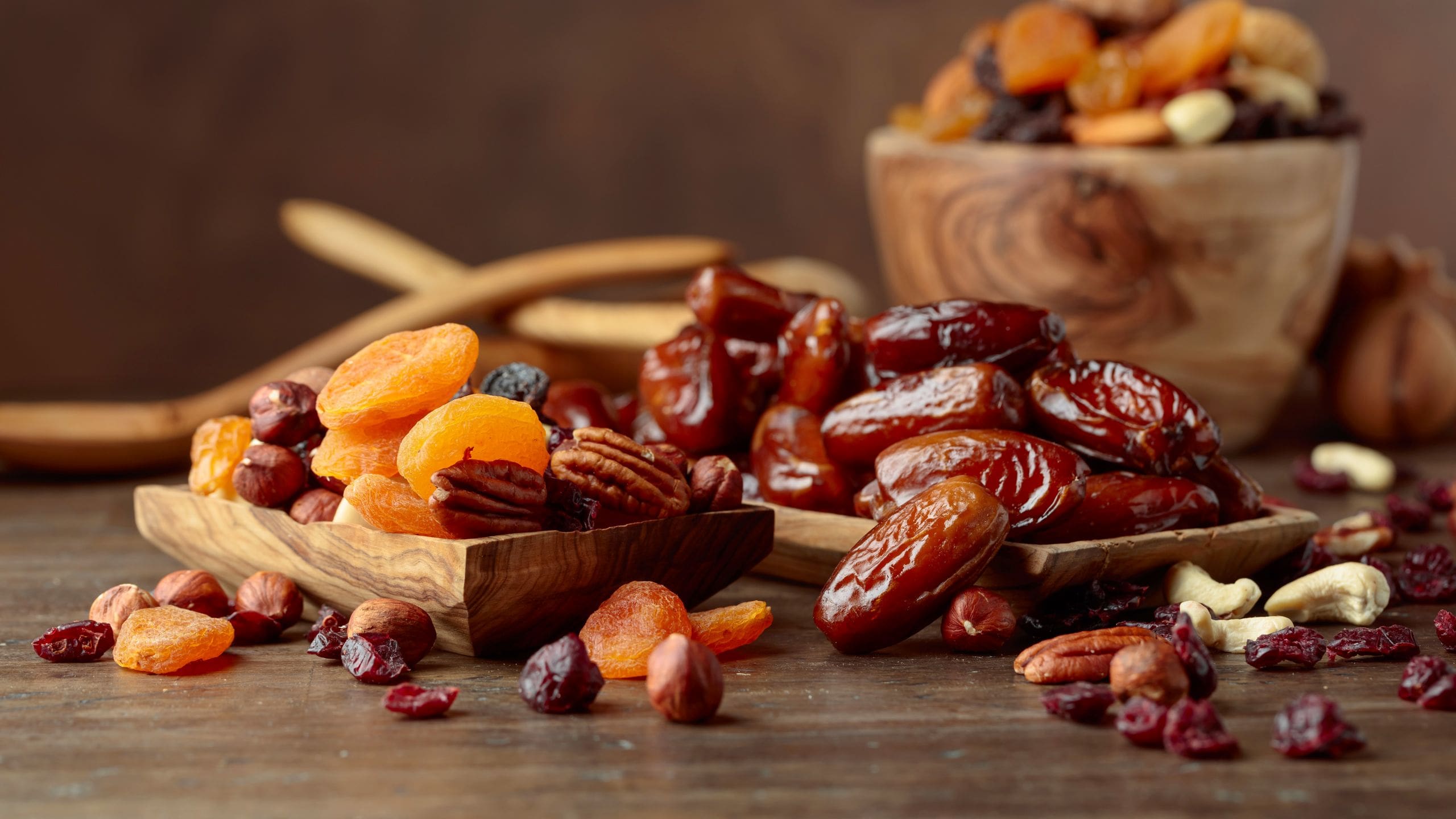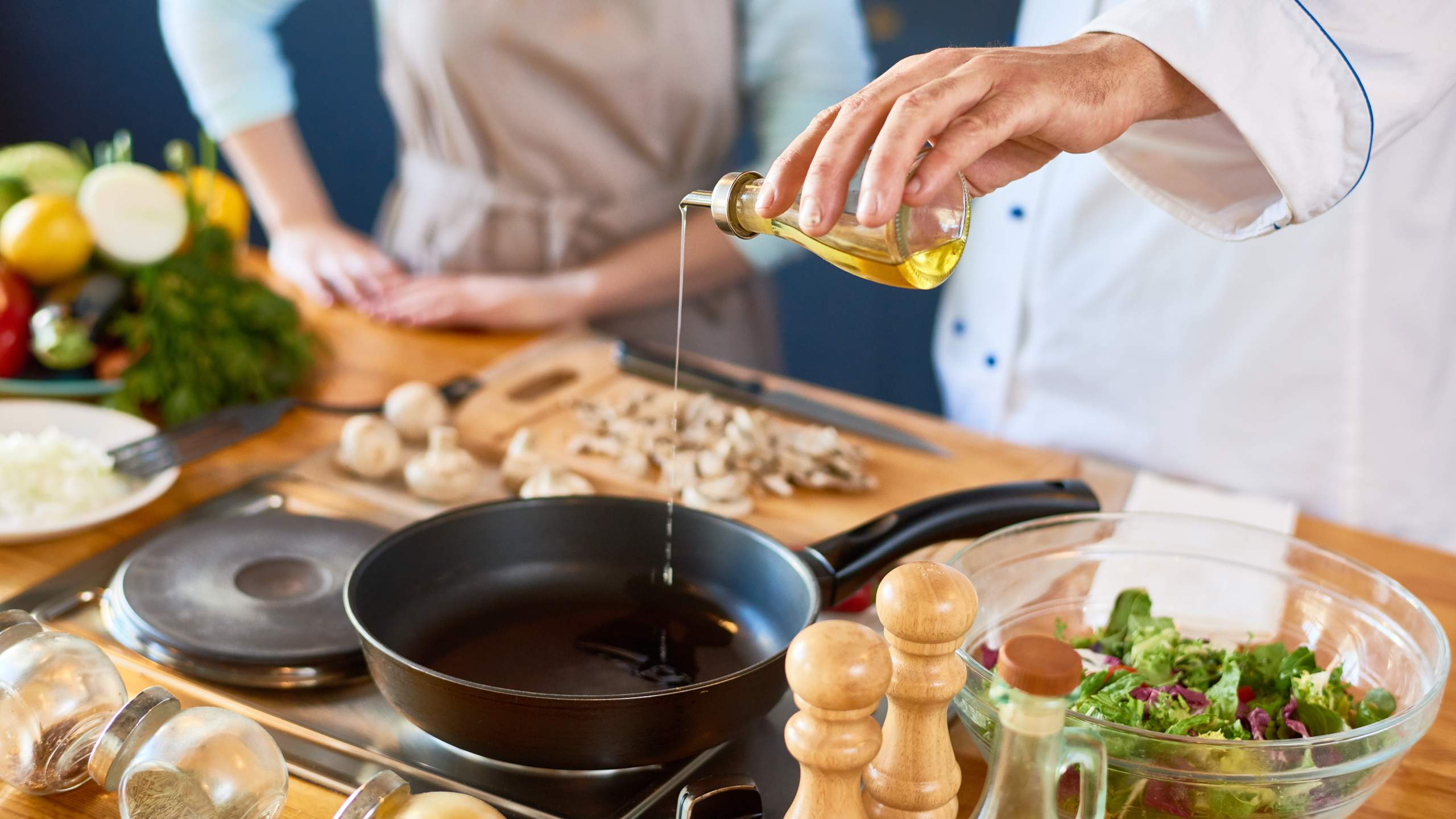Dried fruits and Christmas, a long-lasting love
It’s Christmas. In just about every Portuguese household there’s a delicious smell of raisins, cinnamon, and dried figs. In Poland, the air is filled with the aroma of kompot (a delicious drink of dried fruit) and kutia (a sweet made of cereals, raisins, sugar and milk or cream), two of Wigilia’s 12 dishes, the name given to the typical Polish Christmas dinner. In Colombia, while grandma prepares a Torta Negra (a dried fruit and rum based cake), for which the kids very excitedly await, there is a fresh panettone on the table filling the house with irresistible aromas.
Although separated by thousands of kilometres, what do traditional Christmas sweets from these three countries have in common? It may not be immediate, but if you thought “dried fruit”, you got it right!
Dried fruits: what are they exactly?
Dried (or dehydrated) fruits are a staple of Mediterranean cuisine. Dried fruits such as raisins, figs, dates, apricots, or apples are common on special occasions, being part of several main dishes, typical Christmas desserts or Easter sweets. More recently, dried, or dehydrated fruits are often consumed as snacks between meals and as a snack before or after exercise.
But why are dried fruits so popular? Because drying fruit was a preferred conservation method when there were no refrigerators, allowing people to eat these fruits even when they were out of season. Dehydrating fruit has become another way to enjoy fruit, especially in the colder months.
Dried fruits: to enjoy with moderation
Dried fruits are rich in fibre and are a source of minerals such as iron and potassium.
In the drying process, fruit loses water and, thus, weight, resulting in a high concentration of sugar. If we compare 100 g of fresh fruit with 100 g of the same dehydrated fruit, the latter will have a higher concentration of sugar and therefore more calories for the same weight. However, if we compare one piece of fresh fruit with a piece of the same fruit but dehydrated (e.g., a grape with a raisin), they will have the same calories and amount of sugar per unit, provided that no sugar was added. That being said, the amount of sugar and calories in 12 raisins, 3 dried apricots, 3 dried plums, or 2 dried figs, will be the same as in 12 grapes, 3 fresh apricots, 3 fresh plums, or 2 fresh figs, respectively.
Candied fruits, also very much appreciated during the season, especially in traditional Christmas cakes or breads all over the world, are fruits to which sugar was added. These are not considered dried fruits.
Dried fruits in traditional Christmas sweets
In Portugal, Colombia and Poland, dried fruits are a constant presence in Christmas celebrations. Join us on this journey.
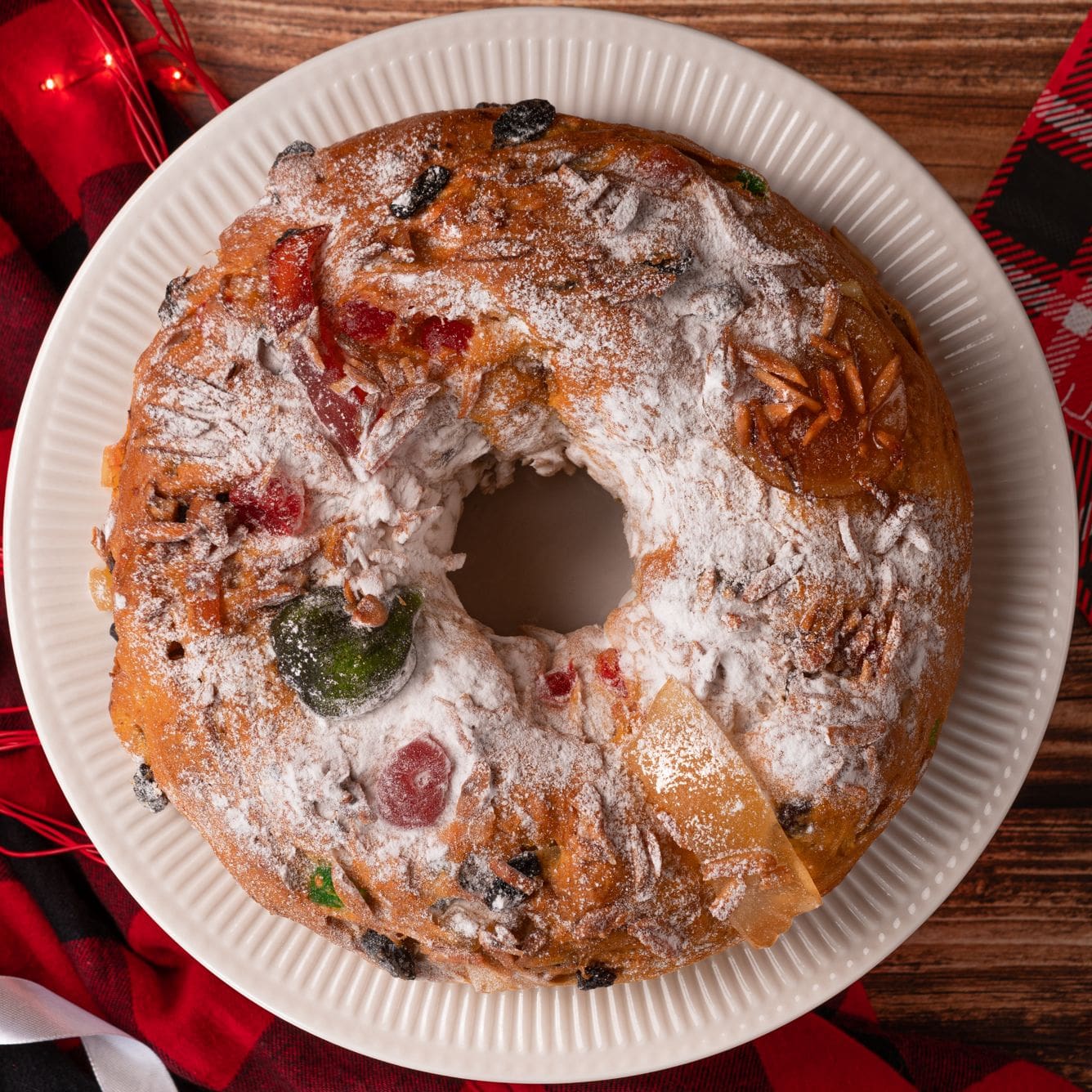
-
Portugal
For Portuguese people, dried fruits do not require introductions. Raisins, sultanas, dried figs, plums and apricots, or dates have a reserved seat on the dessert table.
The Bolo-rei, the king of Christmas cakes (which is what the name literally means), also contains a variety of dried and candied fruits, as well as nuts. Just like gems on a crown. For those who aren’t fans of candied fruits, there is always Bolo-rainha, the queen of Christmas cakes, made with only dried fruits and nuts, such as pine nuts, almonds, and walnuts.
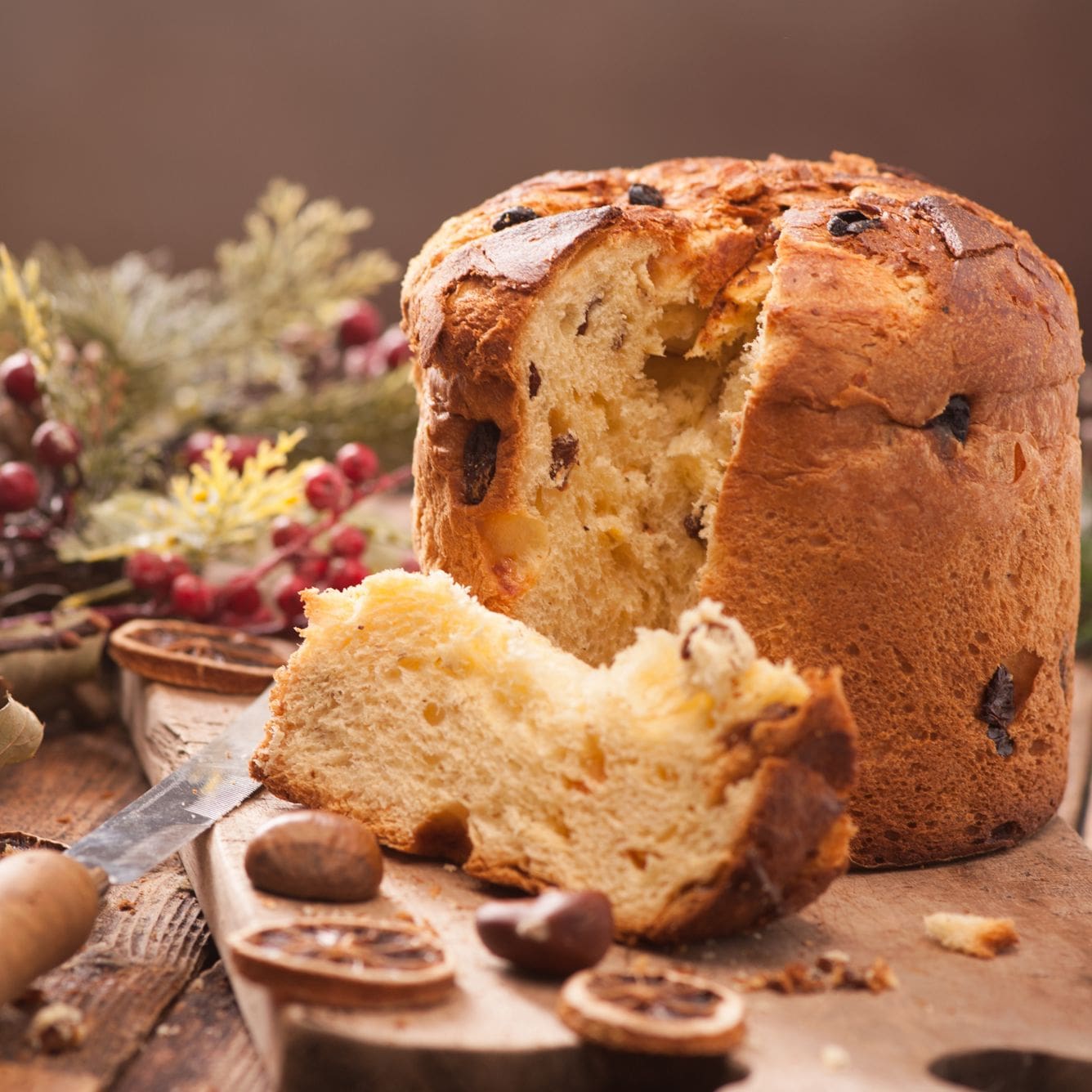
-
Colombia
Several typical Christmas desserts in Colombia include dried fruits. Take the famous panettone which, despite having originated in Italy, is replicated in many countries. In addition to the mild vanilla flavour, panettone contains dehydrated apricot, papaya, orange, lemon, apple, citron, and raisins. Also, the Natilla de Ron con Pasas, a pudding made of condensed milk and rum, has delicious raisins in it.
Another Christmas sweet that’s widely appreciated is the Torta Negra, or the Colombian black cake. This cake is made with dried fruits previously macerated in wine or rum. It usually contains dried apricots, raisins, ciruelas (a small variety of prune), and nuts. The preparation of this cake is a true ritual that begins two to three weeks in advance. It is often used as a Christmas or wedding gift.
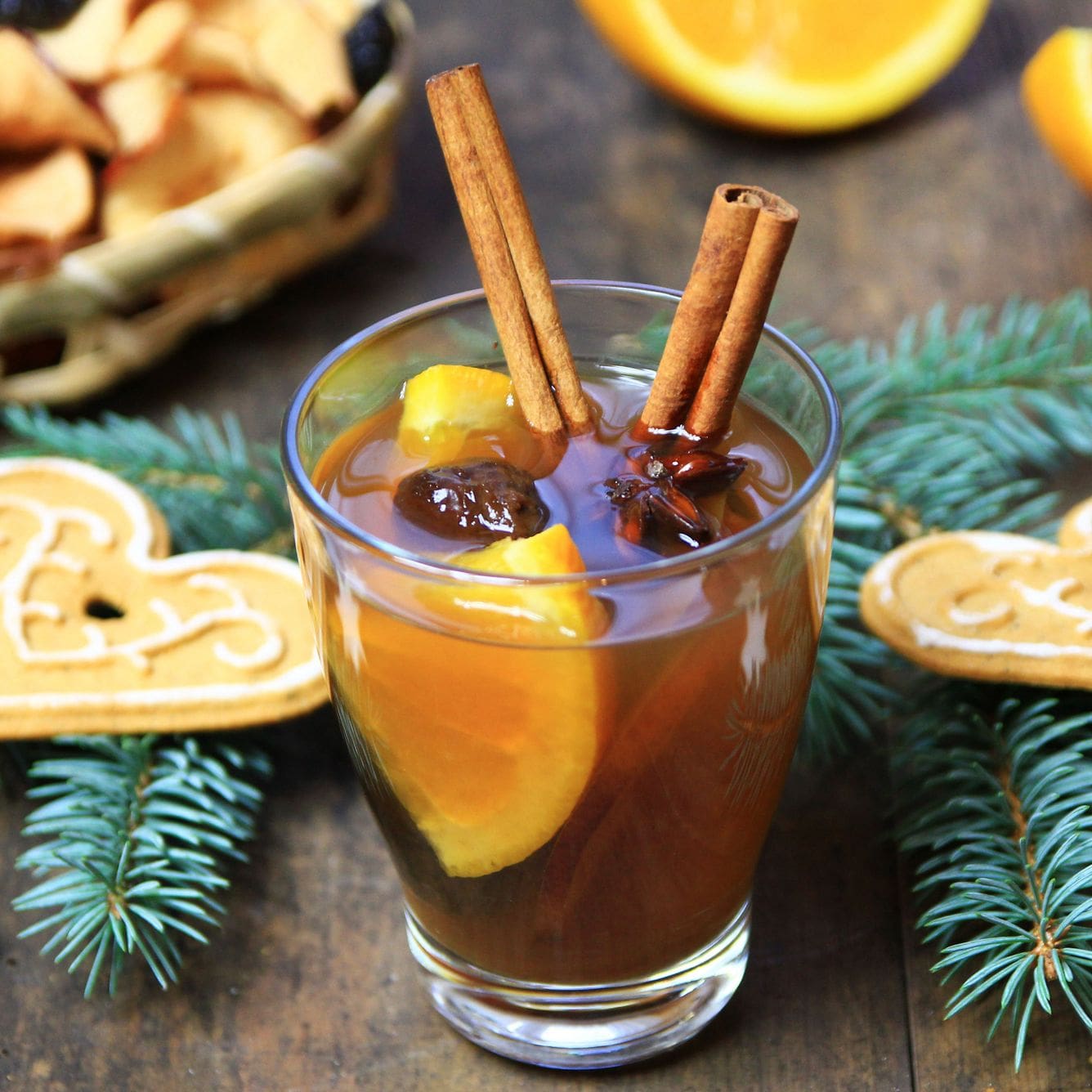
-
Poland
The Polish Christmas supper, Wigilia, consists of not one, but 12 dishes! Among these 12 dishes, including starters, main courses, soups, desserts, and drinks, are Kutia and Kompot. Kutia is a sweet mix of cereals, raisins, sugar, and milk or cream, common in several Slavic countries, and is usually the first dish to be served in Wigilia.
But the shining star of Polish Wigilia is Kompot, a drink made from dried fruits – typically 12, one for each apostle – boiled in water with cinnamon and clove.
Did we tickle your curiosity about Kompot? Understandable! So, how about this year you bend your own Christmas tradition a little, and serve this typical Christmas drink during supper?
Kompot – dried fruit drink
Ingredients:
- 700g of mixed dried fruit (raisins, figs, apricots, plums, apples, pears, etc.).
- 2L water.
- 10 whole cloves.
- 2 cinnamon sticks.
- Lemon zest (optional).
- 1 tablespoon sugar or honey (optional).
Preparation:
- In a large pan, submerge the dried fruits and all the ingredients in the 2L of water and bring to a boil.
- Reduce to medium heat and let simmer for 20 minutes or until the fruit is soft and the syrup has thickened.
- Add more water if you want a more liquid consistency. If you prefer a thicker Kompot, let it reduce for longer.
- When it reaches the desired consistency, create an ice bath, and submerge the Kompot into the pan to cool it down.
- Once cooled to a pleasant temperature, transfer to transparent cups, or glass jars, and serve. It can be enjoyed cold or warm.
Tip: If you like the taste, add one star anise to the list of ingredients!
Did you enjoy this Christmas trip? If so, let’s get to work… on these lovely Christmas dishes. And if you like to try different flavours and recipes, discover these 3 vegan Christmas recipes from the world!
